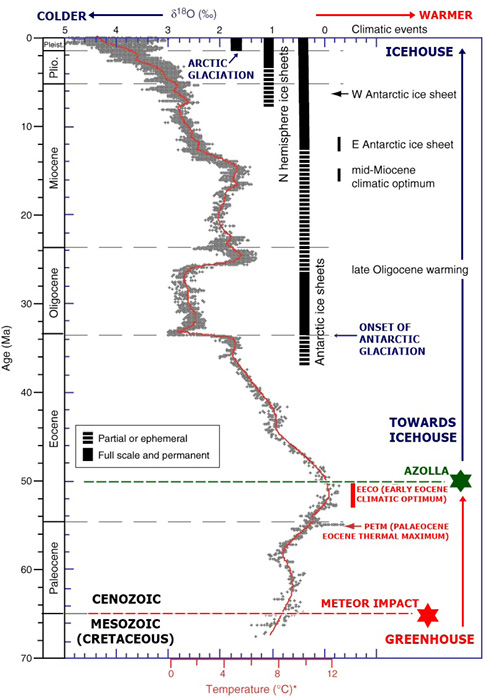The Azolla Story is the fascinating account of the evolution, life and global potential of a freshwater plant called Azolla. Azolla, a symbiotic organism using photosynthesis and nitrogen fixation; not with specialist leaf shapes and surfaces as with the Roraima carnivorous plants, but with ‘built-in’ cyanobacterial filaments and bacterial mass. Azolla, a water-surface weed obstructing small boats on Dutch canals, or a super fertiliser, super CO2 fixer, super water cleaner, super heavy metal remover, super too many things to name.
With over 400 pages, The Azolla Story has an impressive listing of reference sources and consists of 38 richly illustrated chapters organised temporally into: The Past, the Present and the Future. The Past covers the discovery of Deep Time, the evolution of our biosphere and the evolution of Azolla. The Present contains many fascinating pages with Azolla as biofuel catalyser, as fertiliser, water and air cleaner and as biomedical facility. The Future outlines the Azolla Biosystem on Earth as well as in extraterrestrial endeavours and in mankind’s other new missions.
Let us briefly look at one of the central and early chapters in this book that portrays the discovery of a 50-million-year-old Azolla ‘lake’, whose plant properties can be of much use for our current and future world.
The Deep-Sea Drilling Project (DSDP) and its successor the International Ocean Drilling Project (IODP), had long been frustrated in not having one or more drilling expeditions penetrating the Arctic Ocean floor. Finally, in August 2004, IODP Leg 302 with a team of two icebreakers, one from Sweden and one from Russia, allowed a special drilling vessel called Vidar Viking to be stationary long enough to drill the Lomonosov continental ridge between Russia and Greenland in the iced-over Arctic Ocean.
In over 1200m of water, now covered by metres of thick sea ice, the selected team of invited geoscientists discovered that almost 50 million years ago the then isolated Arctic Ocean, whose history we still poorly understand, for almost 1 million years had an almost freshwater cap. With sufficient input from riverine phosphorus, this special surface environment allowed Azolla to thrive and deposit metres of thick laminated strata on the sea floor. The lamination reflects the systematic alternation of tropical dark and tropical light half years. It had been known that both northern Canada and Siberia had a subtropical to tropical climate and corresponding biosphere in Paleocene and early Eocene times. The almost monotypic and near-freshwater Azolla flora is a special local phenomenon.
Unfortunately, the Vidar Viking drill sites revealed absence of the post-Azolla era (43 to 18 million years ago, Middle Eocene to Early Miocene) sedimentary record on Lomonosov Ridge, probably due to erosion by Miocene geostrophic bottom currents. Hence, the transition from global greenhouse to icehouse in the Arctic Ocean itself is not documented. But it is the discovery and coring of this unique floating fossil flora deposit, just after the Paleocene–Eocene Thermal Maximum (PETM), that led to a series of international workshops discovering and establishing what role Azolla played geologically, and what role it has and can have in the Anthropocene on Earth. It inspired the Bujaks to weave and write the present book.
The many chapters following on from the spectacular discovery of the Eocene Azolla event, cover in some detail how the little Azolla plant helps to make our world greener and better. The reader is introduced to how Azolla is used for purifying water and in biofertilisation and livestock feeding.
Azolla also is a valuable agent for saving mangroves, has important uses in cultivation of rice, as a mosquito controller, germplast controller, biofuel maker, for carbon capture and storage, and potential for growing and harvesting in space.
The Bujaks are realists and outline a practical bottom-up strategy of local Azolla Hubs for Azolla Biosystems to make our world greener and better. This book is perfect for those that enjoy real-time science in action with fascinating results. The Azolla Story is an excellent combination of art, science, technology, and social philosophy with a splendid and clever message in a handy pocket e-book format for all of us who want to improve life on Earth. It is recommended reading in 2021.
Further Reading
The Azolla Story: Climate Change and Arctic Hydrocarbons
Jane Whaley
Could a single plant species have really changed the Earth from a greenhouse world towards the modern icehouse state – and what are the implications of this for both petroleum exploration and climate change?
This article appeared in Vol. 4, No. 4 – 2007







